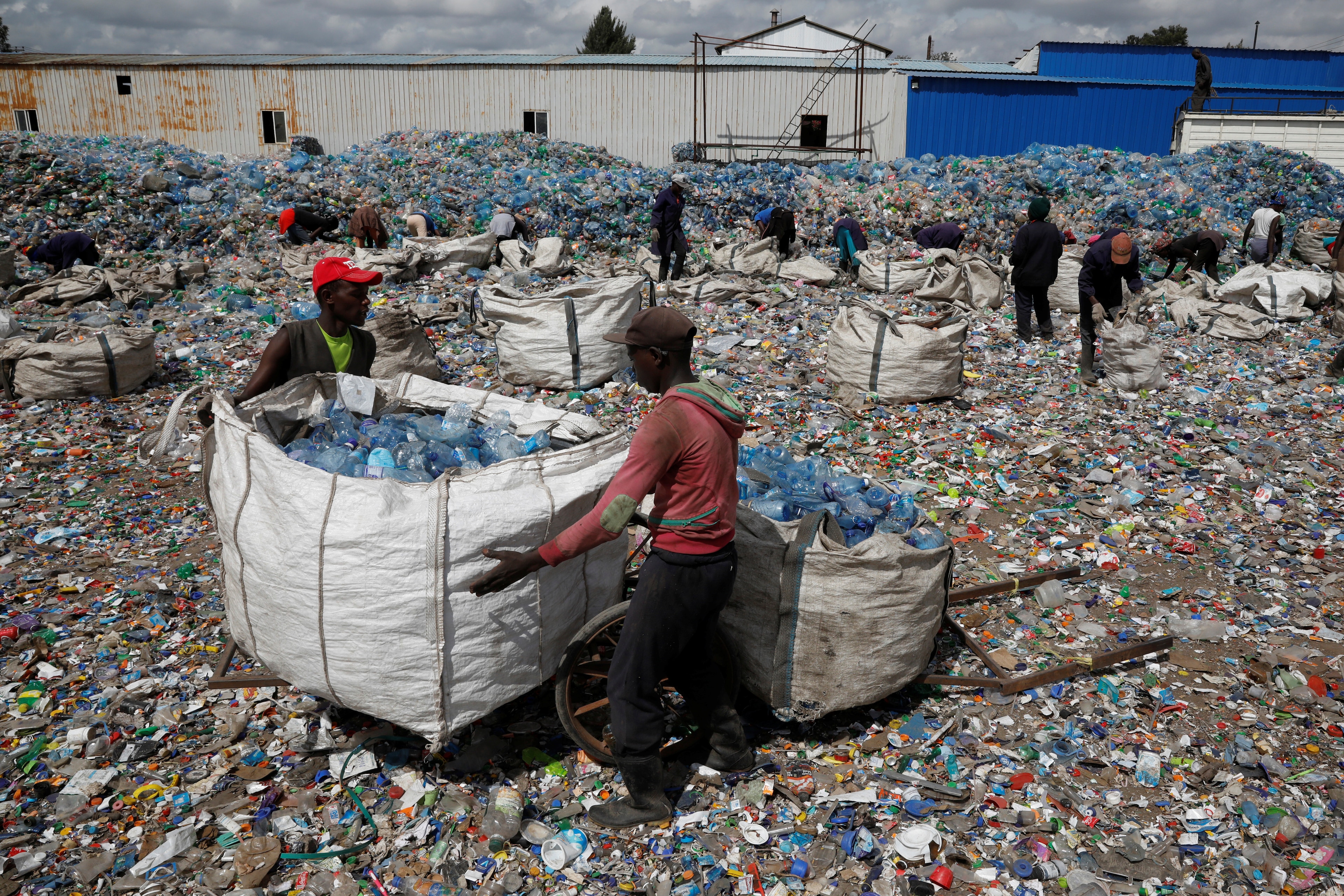Suits you - and the planet: Why fashion needs a sustainability revolution

Javier Goyeneche called for an end to continuous promotions and discounts.
Image: Markus Spiske/Unsplash
Stay up to date:
Retail, Consumer Goods and Lifestyle
Listen to the article
- Urgent action is needed to make the fashion industry more sustainable, according to two experts.
- A change in mindset is needed from consumers and producers.
- Broader, systemic change is also needed for fashion's business model.
The global fashion industry has been labelled by many as unsustainable.
Consider that, according to the United Nations, nearly 20% of the world's wastewater is produced by the fashion industry and it's responsible for around 10% of global emissions.
Add to that the concern around microplastics from clothing entering the ocean and you get some sense of where this label has come from.
But there are innovators within the industry who are trying to drive change. Two of them joined the 'Meet the Pioneers of Sustainable Fashion' session at the Sustainable Development Impact Summit 2021 to look at what needs to be done.
The need for urgent change
"We don't have time," urged Safia Minney, Founder at People Tree, a Fair Trade fashion pioneer. "We cannot afford the trajectory of fashion increasing to maybe as much as 25% of global greenhouse gas emissions by 2050. And that's the trajectory that we're on."
There's a real urgency to shift, she believes, but there are important questions to answer.
"How do we take out fossil fuels from the fashion industry? How do we move to regenerative agriculture? How do we move to make small-scale farmers and even artisans and craft manufacturers essential to create social impact and social justice?" she asked.
The change needs to be 'radical', she stressed. "We have to reduce production and consumption of fashion by between 75% and 95%. We're not talking about snipping a bit off."
But, we can do this while supporting jobs and providing work, she added. "We can find livelihoods in the global south and more locally, because we're going to be localizing fashion."
A shift in mindset
Part of what's needed is a shift in mindset, explained Javier Goyeneche, Founder and President at ECOALF, a Spanish clothing company that pioneers high-tech new materials made from waste.
"I think fashion cannot just be about looking good anymore," he said. "It also has to be about doing what is right and feeling good about it."
Accept our marketing cookies to access this content.
These cookies are currently disabled in your browser.
There's a responsibility on the consumer as well as producers, he added. "You don't need 20 T-shirts," he said. "You have to start buying less and buying with more sense of responsibility." There simply won't be enough resources unless we 'change the way we consume'.
Minney agreed and called for a greater understanding of the resources that go into clothes. "It's actually lovely to start treasuring one's clothes," she said. People need to understand that even a single T-shirt costs 2,700 litres of water to produce, which is two-and-half-years of drinking water for one person.
Accept our marketing cookies to access this content.
These cookies are currently disabled in your browser.
What is the World Economic Forum doing to champion social innovation?
A change to business models
Broader, systemic change is also needed, explained Minney.
"I mean, it's the economy, stupid, isn't it?" she quipped. "It's just a totally dysfunctional economy that has been for decades and decades. And now we're finally calling it, we're saying that we need systems change."
Goyeneche agreed: "I think we need to change many things and the business model of fashion is one of them, it has to be redefined.
"We have the opportunity and the responsibility to redefine a business model, which is not working because you cannot have a business model which is about buying, throwing, buying, throwing."
This sends millions of garments to landfill, he explained. Garments that all use large amounts of natural resources, chemicals and produce emissions. And it doesn't matter if you've made these garments with sustainable fabric. A sustainable fabric doesn't make something sustainable, he said. There are many more elements to it and challenges across the business model - for example continuous promotions and discounts.
Accept our marketing cookies to access this content.
These cookies are currently disabled in your browser.
Don't miss any update on this topic
Create a free account and access your personalized content collection with our latest publications and analyses.
License and Republishing
World Economic Forum articles may be republished in accordance with the Creative Commons Attribution-NonCommercial-NoDerivatives 4.0 International Public License, and in accordance with our Terms of Use.
The views expressed in this article are those of the author alone and not the World Economic Forum.
Related topics:
Forum Stories newsletter
Bringing you weekly curated insights and analysis on the global issues that matter.
More on Nature and BiodiversitySee all
Oliver Kade, Sarah Hadley and Judith Ketelslegers
July 28, 2025
Nasim Pour, Sebastien Cross and Joel Gould
July 28, 2025
Elena Raevskikh and Giovanna Di Mauro
July 23, 2025
Arunabha Ghosh and Jane Nelson
July 22, 2025
Sebastian Buckup and Beth Bovis
July 10, 2025






